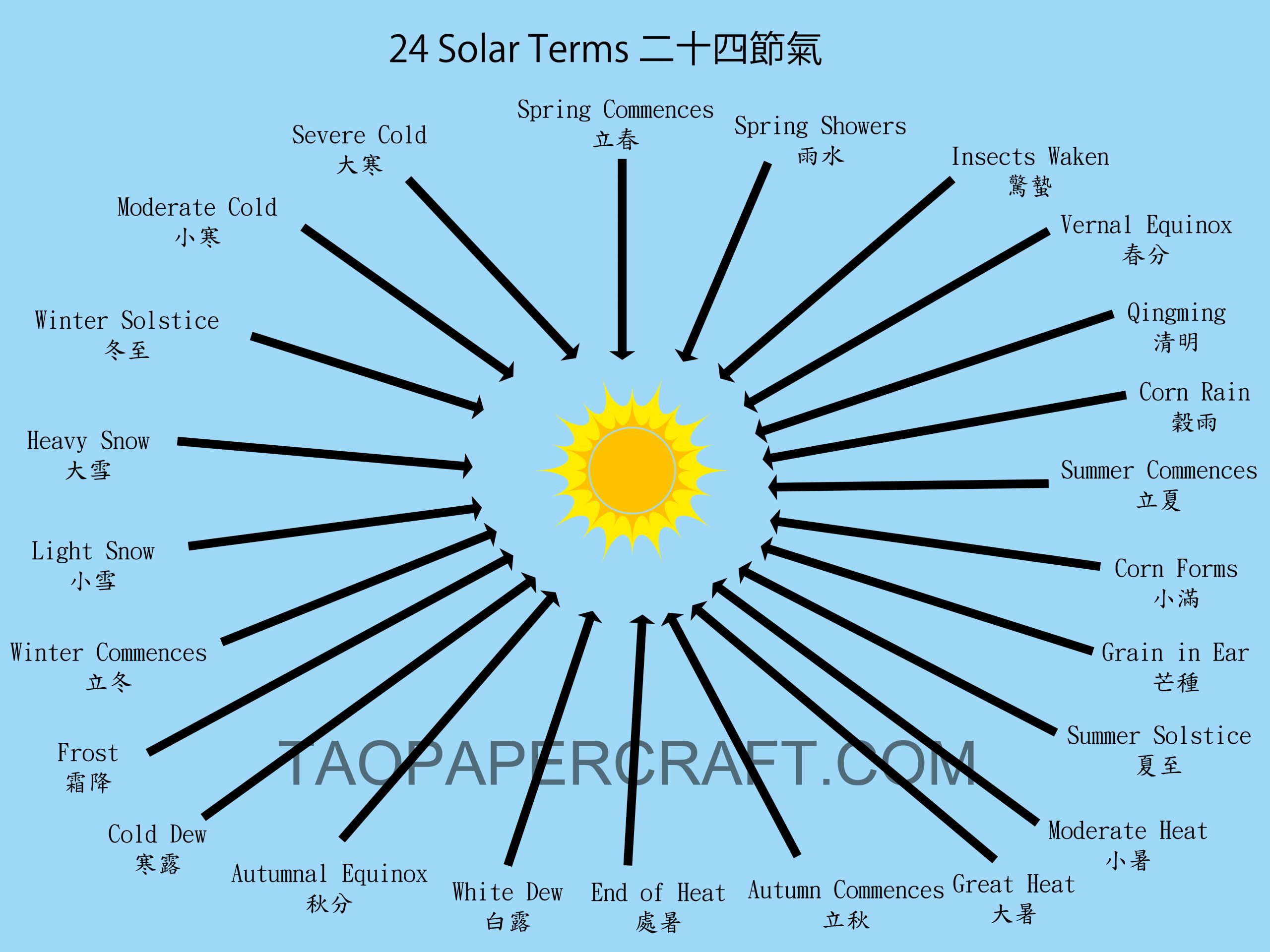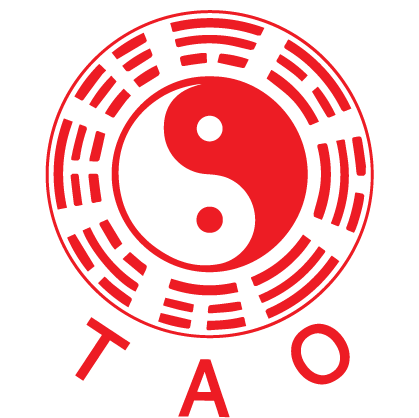
There are total 24 solar terms in each lunar year accordingly to the Chinese traditional. The 24 solar terms indicated 24 specific days during the year with different weather phenomenon and act as indicator for the former to prepare corresponding actions for their farms. Since the 24 solar terms are related to weather and the calculation of the date is according to the ecliptic, many Taoist and Chinese traditional culture ceremony are also planned to take place on a specific solar term date.
There are total of 24 solar terms during a lunar year and they are Spring Commences, Spring Showers, Insects Waken, Vernal Equinox, Qingming, Corn Rain, Summer Commences, Corn Forms, Grain in Ear, Summer Solstice, Moderate Heat, Great Heat, Autumn Commences, End of Heat, White Dew, Autumnal Equinox, Cold Dew, Frost, Winter Commences, Light Snow, Heavy Snow, Winter Solstice, Moderate Cold and Severe Cold.
Spring Commences
The 1st solar term of the year, it is when the ecliptic reaches 315°. It is the date of the beginning of spring. Also in Chinese traditional, it is the day of the beginning of year. Farmers are normally prepared to start their farm on the day.
Spring Showers
The 2nd solar term of the year, it is when the ecliptic reaches 330°. It is believed that the day has heavy rain.
Insects Waken
The 3rd solar term of the year, it is when the ecliptic reaches 345°. It is believed that the day of the insects wakening from the winter hibernation. Also believed to have a loud lighting which wakes them up.
Vernal Equinox
The 4th solar term of the year, it is when the ecliptic reaches 0°. It is the day when the sun shines directly, and the day and night have the same period of time. Rain amount slowly increases, plants start to grow.
Qingming
The 5th solar term of the year, it is when the ecliptic reaches 15°. Qingming is not only a solar term, it is also a big festival in the Chinese culture. It is believed that the temperature will rise and get warm and is a good time to farm. During the Qingming festival, Chinese normally go hiking or grave visiting.
Corn Rain
The 6th solar term of the year, it is when the ecliptic reaches 30°. The weather gets warm, cool weather finished and amount of rains increase which helps the plants to grow.
Summer Commences
The 7th solar term of the year, it is when the ecliptic reaches 45°. It is the the first of the summer. Day time is longer than night time.
Corn Forms
The 8th solar term of the year, it is when the ecliptic reaches 60°. It is believed that the fruits started to form on that day.
Grain in Ear
The 9th solar term of the year, it is when the ecliptic reaches 75°. It is believed that the weather will gets hot and dry. The barley and wheat are difficult to grow at this moment and it is time to harvest. And it is time to grow millet and proso millet which is suitable to grow under this type of weather.
Summer Solstice
The 10th solar term of the year, it is when the ecliptic reaches 90°. It is believed that it is time to enter the hottest period of the year.
Moderate Heat
The 11th solar term of the year, it is when the ecliptic reaches 105°. The temperature is getting hot, however is not the hottest point of the year.
Great Heat
The 12th solar term of the year, it is when the ecliptic reaches 120°. It is believed that the day is the hottest point of the year. Plants love to grow under heat will grow the fastest at this point.
Autumn Commences
The 13th solar term of the year, it is when the ecliptic reaches 135°. The first day of autumn. Weather gets cooler after this date
End of Heat
The 14th solar term of the year, it is when the ecliptic reaches 150°. It is believed that the end of the accumulated summer heat, and the temperature gets cooler.
White Dew
The 15th solar term of the year, it is when the ecliptic reaches 165°. The weather get cooler, dew appears at the ground and leafs during dawn time.
Autumnal Equinox
The 16th solar term of the year, it is when the ecliptic reaches 180°. It is half way of autumn. On this day, the day and night time length are the same. It is a good time to harvest.
Cold Dew
The 17th solar term of the year, it is when the ecliptic reaches 195°. The weather is getting cooler and the some dew start to form frost and begins slowly into the snowing period.
Frost
The 18th solar term of the year, it is when the ecliptic reaches 210°. The weather gets cold and some of the places in China show the appearance of frost. Storm period ended.
Winter Commences
The 19th solar term of the year, it is when the ecliptic reaches 225°. The beginning of winter. Crops should be harvested and animals and inserts are ready to hibernate. Rainfall largely decreases and temperature drops dramatically.
Light Snow
The 20th solar term of the year, it is when the ecliptic reaches 240°. The temperature of some places in China drops below 0. Snow appears.
Heavy Snow
The 21st solar term of the year, it is when the ecliptic reaches 255°. Most of the places in China have heavy snow.
Winter Solstice
The 22nd solar term of the year, it is when the ecliptic reaches 270°. The shortest day time and longest night time of the year. According to the Chinese traditional, winter solstice is equally important as the new year day, and will cerebrate with family on that day.
Moderate Cold
The 23rd solar term of the year, it is when the ecliptic reaches 285°. Entering the coldest period of time.
Severe Cold
The 24rd and the last solar term of the year, it is when the ecliptic reaches 300°. It is believed that the day is the coldest day of the year.
